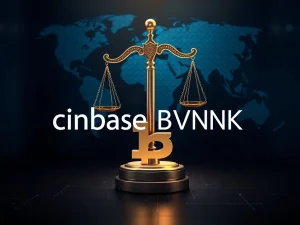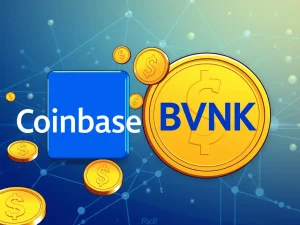Anticipated Digital Dirham Rollout: UAE’s Revolutionary CBDC Arrives Q4 2025

Get ready for a groundbreaking shift in the financial landscape of the United Arab Emirates! The highly anticipated digital dirham, the UAE’s central bank digital currency (CBDC), is slated for rollout in the fourth quarter of 2025. This initiative signals a major leap towards modernizing the nation’s financial infrastructure and solidifying its position as a global hub for innovation.
What to Expect from the Digital Dirham Rollout in 2025?
According to a recent report in the Khaleej Times, Central Bank of the UAE (CBUAE) Governor Khaled Mohamed Balama highlighted the transformative potential of the digital dirham. Speaking on the matter, Balama emphasized that this blockchain-based currency is designed to enhance financial stability and act as a powerful tool in combating financial crime. The initial phase of the digital dirham rollout will focus on the retail sector, with issuance expected in Q4 2025.
Balama stated, “It [digital dirham] will further enable the development of innovative digital products, services, and new business models while reducing cost and increasing access to international markets.” This vision underscores the UAE’s commitment to leveraging cutting-edge technology to foster economic growth and efficiency. Crucially, the report clarifies that both the digital dirham and its traditional physical counterpart will be equally accepted across all payment channels, ensuring a seamless transition and widespread usability.
A Fresh Identity for the Digital Dirham
Adding to the excitement, the digital dirham has been unveiled with a brand new symbol. This symbol cleverly integrates the international symbol for the dirham with two horizontal lines inspired by the UAE flag. These lines are intended to represent the currency’s stability and reliability. This rebranding effort is a strategic move to create a distinct and recognizable identity for the digital dirham as it prepares for its launch.
The UAE’s Journey Towards a Digital Currency Future
The path to the digital dirham rollout has been paved with strategic regulatory frameworks and proactive initiatives. Let’s take a look at the key milestones:
- June 2024: Stablecoin Licensing Framework Approved: The CBUAE took a significant step by approving a comprehensive licensing framework for regulating stablecoins. This framework, discussed during a CBUAE board meeting in Abu Dhabi, provides clear guidelines for the issuance, licensing, and supervision of payment tokens pegged to the UAE dirham.
- Tether’s Dirham-Backed Stablecoin Ambition: Following the framework’s approval, Tether, a leading stablecoin issuer, announced ambitious plans to launch a dirham-backed stablecoin in collaboration with local powerhouses Phoenix Group and Green Acorn Investments. This partnership aims to establish a fully-backed digital representation of the UAE dirham.
- AED Stablecoin Gains In-Principle Approval: The momentum continued with AED Stablecoin receiving in-principle approval in October 2024 to issue a regulated dirham-pegged stablecoin within the UAE. This signifies growing interest and competition in the dirham-backed stablecoin space.
- TON Network Integration for Tether’s Stablecoin: In November 2024, The Open Network (TON) announced that Tether’s dirham-pegged stablecoin would be launched on its blockchain network, further expanding the reach and accessibility of dirham-backed digital assets.
Beyond Dirham-Backed Stablecoins: A Broader Digital Asset Ecosystem
While dirham-backed stablecoins are gaining prominence, the UAE is also embracing a wider spectrum of digital assets. US dollar and euro stablecoins have already found a welcoming environment in the country.
- Dubai’s Progressive Stance on Stablecoins: The Dubai Financial Services Authority (DFSA), the independent regulator for the Dubai International Financial Centre (DIFC), has recognized Circle’s USDC and EURC as the first regulated stablecoins under its crypto token regime. This move underscores Dubai’s commitment to fostering a regulated and innovative crypto environment.
- Ripple’s Interest in UAE Stablecoin Landscape: Ripple, a prominent player in the crypto space, has expressed keen interest in the UAE’s stablecoin regulations. A Ripple spokesperson confirmed that the company is actively monitoring developments and indicated that their RLUSD stablecoin is already available in the UAE market.
The Road Ahead for the Digital Dirham and UAE’s Financial Future
The impending digital dirham rollout in Q4 2025 marks a pivotal moment for the UAE. By embracing a CBDC, the nation is poised to unlock numerous benefits, including:
- Enhanced Financial Inclusion: The digital dirham can potentially improve access to financial services for underserved populations within the UAE.
- Reduced Transaction Costs: Digital currencies can streamline payment processes and lower transaction fees, benefiting businesses and consumers alike.
- Increased Efficiency and Speed: Digital transactions are typically faster and more efficient than traditional methods, boosting economic activity.
- Combating Financial Crime: As Governor Balama highlighted, the digital dirham is designed to enhance transparency and traceability, making it a valuable tool in the fight against illicit financial activities.
- Innovation and Economic Growth: By fostering a thriving digital economy, the UAE is positioning itself at the forefront of global innovation and attracting investment in the fintech sector.
Conclusion: Embracing the Digital Future with the Dirham
The UAE’s digital dirham rollout in Q4 2025 is not just about adopting a new technology; it’s about strategically shaping the future of finance. This ambitious initiative reflects the nation’s forward-thinking approach and its determination to leverage digital innovation for economic progress and global competitiveness. As the rollout date approaches, all eyes will be on the UAE as it embarks on this exciting journey into the digital currency era. The digital dirham promises to be a game-changer, impacting everything from retail transactions to international trade and solidifying the UAE’s position as a leading digital economy.







